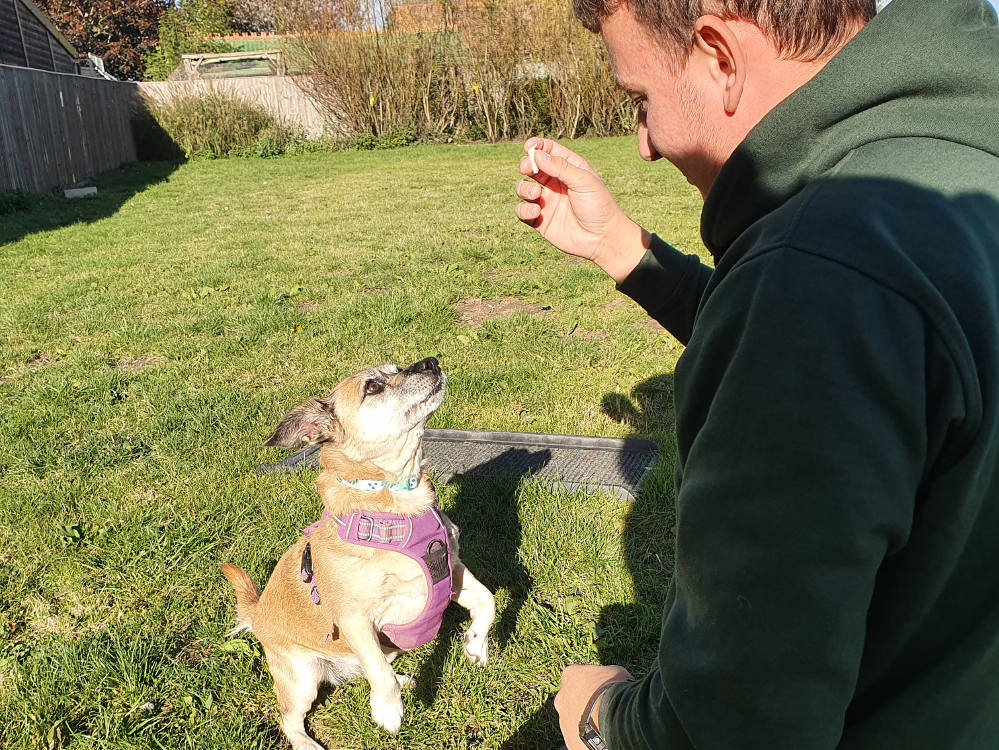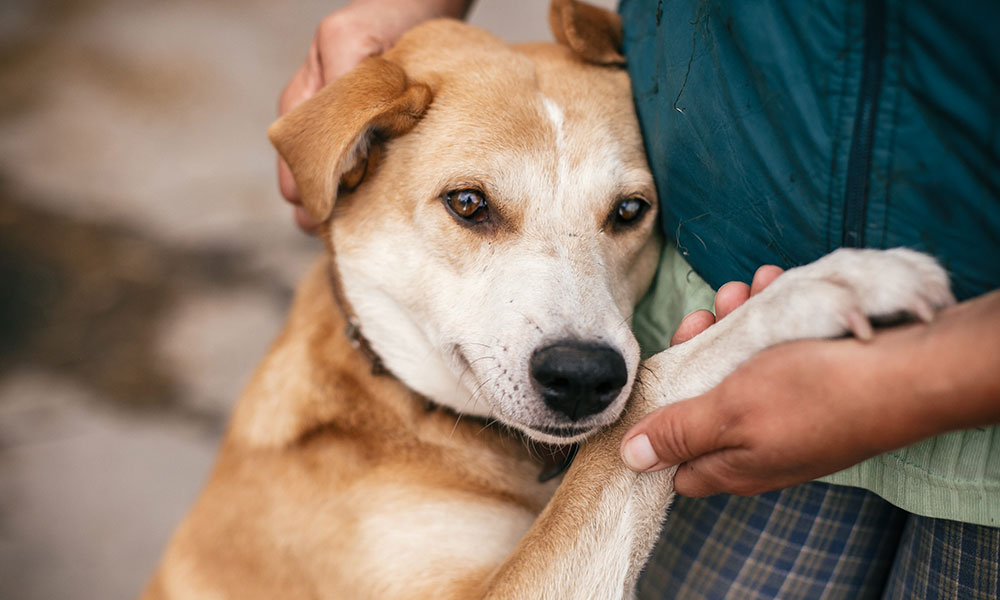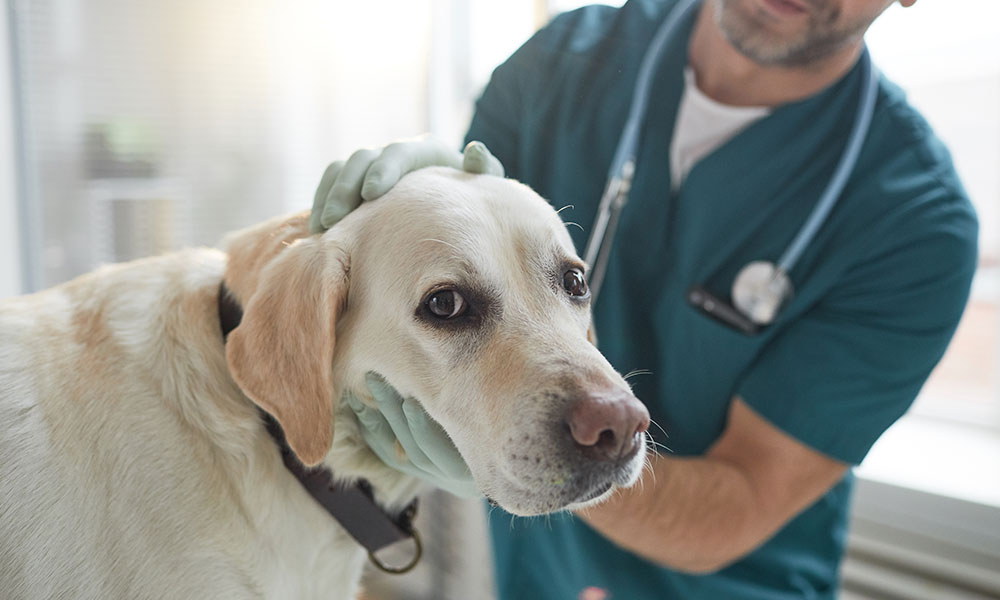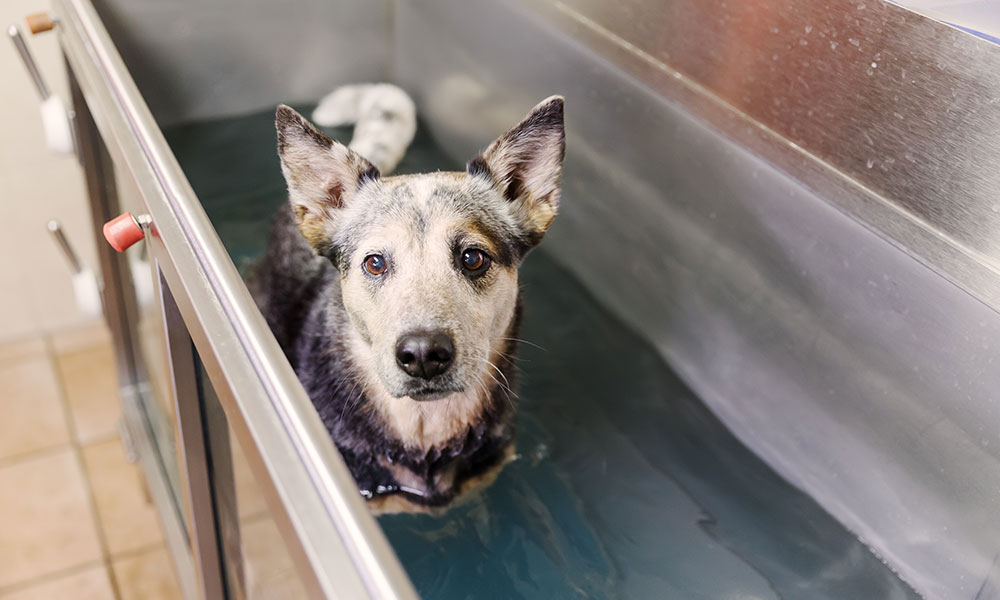As our supporters know, we take animal care seriously at OAS.
Your donations help our team work to high standards possible, given our limited resources and facilities.
Below is a ‘behind-the-scenes look at a day in the life of a dog carer at OAS and our video showing our furry friends and team in action:
Diet
A good quality diet is crucial to their health and well-being. Good ingredients can also help to reduce keep stress levels, particularly in a kennel environment.
We feed our dogs a range of high-quality foods, depending on their needs and preferences. Our staff also weigh each dogs’ food daily and record their weights weekly, to ensure they are the desired weight when they go home, or if the vet recommends a particular target weight.
How do we feed our dogs?
As all dog lovers know, being fed is one of the most enjoyable times in a dog’s day. It also allows us to do some training and enrichment activities, so the staff have, at their disposal, several ways and tools to help with this.
These include:
- Slow feeders, to stop certain dogs from eating too quickly
- Puzzle feeders, to keep them thinking and entertained also makes feeding time slower for dogs who may have needed to eat quickly in their previous homes, i.e., if they were being fed close to other dogs – i.e., competing for food
- Kongs – these can be filled with their food, again, to slow down the feeding and make them work for their food
The staff spend a lot of time weighing food, stuffing Kongs, and often freeze them too, so they can be given at the end of the day, releasing food slowly - Stuffed bones, standard bowls and other methods to feed are also used, depending on what’s best for them
Here’s an example of one technique:
Although our team spend a lot of time with the dogs, unless the dog prefers to be left alone, boredom is a factor in the kennel environment. Therefore, it is important to make sure feeding time is a fun and enjoyable activity, not a quick “put down the bowl and leave” process.
The team record which feeder has been given on their daily ‘training and enrichment’ sheets. This keeps all members of the team, and the dog manager, up to date. Often, we rotate the feeding types to keep things interesting although some dogs prefer a set routine.
All dogs have plenty of fresh water which is refreshed several times daily or as required.
Bowls and feeding tools are cleaned after every use.
Depending on the dog, staff decide whether they are fed inside or outside their kennels if they use the toilet first or after. Each dog tends to have a preference. The staff work out what’s appropriate fairly soon after arrival.
Medication

Many animals arrive in our care with pre-existing medical conditions. In some cases, we may have been provided with veterinary records by the previous owner as well as medication. In many cases, we are not told if they have any medical needs, so all dogs are assessed by our vets and they receive the treatment and medication they need.
The dog manager and assistant manager record this information and communicate it to the dog carers, ensuring the correct dosages are given. In some cases, medication is given by the staff who live on-site, outside normal working times.
Treats
The dog team also spend time cutting up cheese into small pieces so they can be used as training treats.
We also have a list of preferred treats and other useful items on our Amazon Wish List:
https://www.amazon.co.uk/hz/wishlist/ls/1432UA4EAWCJO/ref=hz_ls_biz_ex?
Cleaning
Kennels, outer yards and runs are cleaned daily, using animal-safe products. Spot cleans and full cleans are carried out depending on the dog manager’s system for each dog. Some dogs like their scent being in their environment so it’s not always in their best interests to eradicate this daily. All kennels are fully cleaned before a new dog comes in.
Bedding is washed or changed (mostly daily or when soiled). Toys are also changed or washed, apart from those special ones they love being smelly and horrible!
Due to the needs of many of our dogs, only our staff whom they trust can safely access the kennel areas for feeding, cleaning and exercise.
We are often asked if volunteers and particularly children can come and play with or stroke the dogs. This is not safe at all, and we do not allow this. Kennel blocks have multiple dogs in them, and any strangers can upset just one dog, resulting in not one, but all dogs becoming unsettled.
Walks and exercise
The majority of dogs are walked twice a day. Once in the morning and again in the afternoon. In some cases, instead of a 2nd walk, they spend time off-lead in our exercise area, either playing or training, depending on what’s in their plan.
Some dogs can be safely walked by our wonderful volunteers, but the majority cannot, due to behavioural challenges, so it is down to the team to make sure they do this.
Training and enrichment

Dogs come into our care needing a range of training and enrichment activities to ensure their stay is as calm and positive as possible, and to prepare them for their forever home.
We start by earning their trust and understanding their personalities, what they enjoy etc. Training needs are assessed by a qualified behaviourist and our team.
Once this assessment is done, the team use positive techniques and tools to help the dogs reach their goals. We look after many dogs with issues including dog reactivity, resource guarding and aggression to people.
This work takes patience, skill and lots of time, but is the key to ensuring they are ready to be adopted. This is why the staff try and dedicate as much time in their day to this.
Meeting potential adopters

Our staff will also manage meetings with potential adopters.
Once the dog manager has received an application for a dog, we contact the potential owners to have a deeper chat and then arrange visits.
These visits can vary in terms of time and type, depending on the needs of the dog and the experience of the adopters.
Vet visits

Tuesday is vet day at the Sanctuary.
Our vets visit and carry out any consultations necessary. Vaccinations and minor treatment can be done on-site. All other procedures including neutering, dental treatments and complex surgery are done at the practice.
Physiotherapy and hydrotherapy

Sometimes dogs need limb operations and are referred to physiotherapy and/or hydrotherapy. We use qualified physiotherapists and sometimes animal chiropractors to help dogs recover from surgery or to help them in any way necessary. The staff also take dogs to and from these appointments.
Dogs to staff ratio
We try to work to a maximum ratio of 1:8 but prefer to have 1:6, so they have as much time with us as possible, to limit time alone.
So, as you can see, there’s never a dull moment and the dog team are a busy bunch, every day. And it’s always interesting and challenging!
Thanks to our donors, we can do all of this for our dogs.
Please consider donating to us monthly so we can continue to do this vital work.

